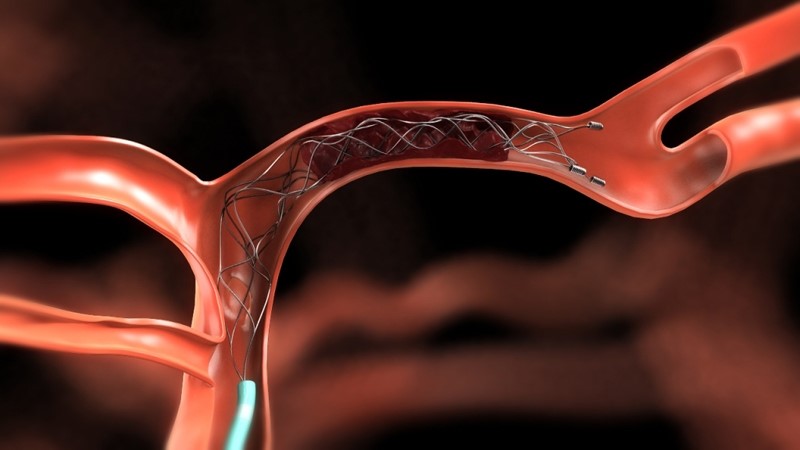Endovascular Thrombectomy – Enhancing Stroke Outcomes in Northwestern Ontario
Published Wednesday, June 12, 2024

Endovascular Therapy (EVT) treatment uses a small tube, a guide wire and stent to remove large stroke-causing clots from the brain.
In Canada, a stroke occurs every five minutes. A stroke is caused by not enough blood getting to the brain. One of the causes of stroke, is blockage of a blood vessel due to a clot. A common source of blood clots that can cause a stroke stems from the heart. If the heart is effected by conditions, like atrial fibrillation, abnormal contractions of the heart can create an environment for clots to form. The clot can travel from the heart, up the large vessels in the neck and into the brain. The brain cannot function without reliable blood flow. This can result in a facial droop, weakness in an arm/leg, changes in vision, speech, swallowing and balance. If blood flow cannot be restored quickly, this inability to function can become permanent for the effected area of the brain. This is why fast access to the right care is very important.
Thunder Bay Regional Health Sciences Centre (TBRHSC) is one of 11 Endovascular Thrombectomy centers across Ontario. Endovascular Thrombectomy (EVT), is a procedure used to treat strokes caused by a clot. This is done with a small tube, guide wire and stent to remove the clot and restore blood flow to the brain. TBRHSC is dedicated to providing life-changing stroke interventions to the region. The hospital has two physicians, Dr. Graeme Marchuk and Dr. Razmik Bebedjian, that preform EVTs and upgrades to equipment have been completed, including an aspirator system for better clot removal. A successful procedure requires specialized equipment and a coordinated team to allow for the best outcome.
"The additional equipment we have received and the upgrades we hope to obtain in the future mean faster and more efficient treatment for patients, ultimately giving the patient the best opportunity for recovery" Dr. A. Hassan, Neurologist and Medical Lead, Northwestern Ontario Regional Stroke Network
While not every stroke patient is a candidate for an acute treatment, those that are, need to be identified quickly. Patients are evaluated with advanced scans of the brain which includes computed tomography perfusion (CTP). CTP is colour coded brain imaging that supports physicians to identify brain tissue that can potentially be saved by treatment. This advancement in imaging was launched in Thunder Bay in October 2021 and in Kenora, Lake of the Woods District Hospital in June 2022, and most recently in Fort Frances in June of last year at La Verendrye Hospital - Riverside Health Care. This technology supports getting the appropriate patients to treatment centres for the best care quickly.
If someone is experiencing sudden stroke symptoms, act FAST - F: Facial Droop; A: Arm Weakness; S: Slurred Speech; T: Time to call 911/local emergency number immediately to get access to stroke care.
For more information and to sign up for our quarterly newsletter, visit www.nwostroke.ca
Donations towards supporting stroke care and EVT initiatives can be directed to the STROKE FUND through Thunder Bay Regional Health Sciences Foundation at www.healthsciencesfoundation.ca
Submitted by the Northwestern Ontario Regional Stroke Network